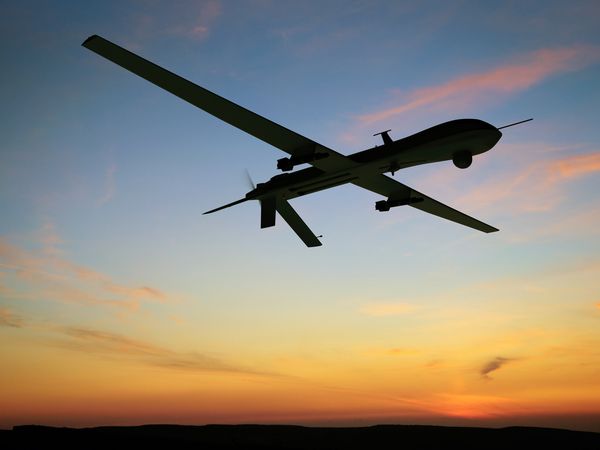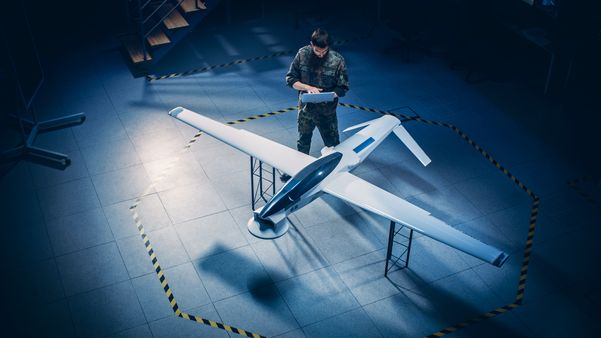Textron Inc. (TXT +2.06%) released mixed fourth-quarter 2017 results on Wednesday morning, with lower military sales within its core Aviation business curbing top-line growth. Still, the industrial conglomerate continued to benefit from both another admirable performance from Bell Helicopter and its acquisition of Arctic Cat last year.
With shares down around 3% as of this writing, let's take a closer look at what drove Textron over the past few months, as well as what investors can expect in the year ahead.

IMAGE SOURCE: TEXTRON/BELL HELICOPTER.
Textron's results: The raw numbers
| Metric |
Q4 2017 |
Q4 2016 |
Year-Over-Year Change |
|---|---|---|---|
|
Revenue |
$4.017 billion |
$3.825 billion |
5% |
|
GAAP net income (loss) |
($106 million) |
$214 million |
N/A |
|
GAAP earnings (loss) per share |
($0.40) |
$0.78 |
N/A |
Data source: Textron Inc.
What happened with Textron this quarter?
- As disclosed earlier this month, Textron's GAAP net earnings were reduced by a provisional tax charge of $1.00 per share related to recent U.S. tax reform, as well as $0.14 per share in restructuring charges. Adjusted for those items, Textron's earnings from continuing operations were $0.74 per share, down from $0.80 per share in the same year-ago period, but ahead of investors' expectations for $0.77 per share.
- Full-year adjusted earnings arrived at $2.45 per share, right at the midpoint of guidance provided last quarter for 2018 EPS of $2.40 to $2.50.
- By segment:
- Textron Aviation revenue declined 3.1% year over year to $1.391 billion, including delivery of 58 new Citation jets (flat from last year's fourth quarter), 31 King Air turboprops (up from 28 last year), and two Beechcraft T-6 Trainers (down from eight last year). Segment backlog increased $15 million sequentially from last quarter to $1.2 billion, while segment profit slipped 11% to $120 million due to higher research and development expenses.
- Bell revenue increased 11% to $983 million, including deliveries of seven V-22s (up from four last year), 13 H-1s (up from eight previously), and 45 commercial helicopters (up from 35 last year). Segment backlog dropped $407 million sequentially to $4.6 billion, and segment profit dipped 9.5% primarily due to changes in commercial product mix.
- Textron Systems revenue decreased 8.1% to $489 million. Segment backlog went down by $67 million sequentially to $1.4 billion, while segment profit fell 30% to $37 million primarily due to lower Weapons and Sensors volumes.
- Industrial sales grew 20% year over year to $1.1 billion, driven by Textron's acquisition of Arctic Cat a year ago. Industrial segment profit climbed 13.7% to $83 million.
- Finance segment revenue dwindled $3 million to $15 million, while segment profit went up by 50% to $6 million.
- Manufacturing cash flow from continuing operations was $947 million for the full year, down from $988 million in 2016. Before pension contributions, manufacturing cash flow was $889 million -- near the high end of guidance for $800 million to $900 million -- up from $573 million in 2016.
- Returned $603 million to shareholders through dividends and repurchases in 2018.
What management had to say
During the subsequent conference call, Textron CEO Scott Donnelly stated:
To summarize the year, we continued to execute our plan for growth through strategic acquisitions and new product innovation to create long term shareholder value. At Industrial, the integration of Arctic Cat continues and reflects our strategy of acquisitions that complement our core businesses and product lines. Equally important is the need to continue to innovate through new product introductions, which was evident throughout Textron's specialized vehicles.
Looking forward
Donnelly added that, after successfully navigating a "challenging year with uncertainties surrounding many of our end markets," Textron is now enjoying improving end markets and stands "well positioned coming into 2018."
Textron expects full-year 2018 revenue to increase 3% year over year to $14.6 billion, assuming growth from Aviation and Industrial offsets lower sales from Bell and Textron Systems. On the bottom line, margins should improve at Aviation, Industrial, and Systems, while remaining roughly flat at Bell. That should translate to earnings per share from continuing operations of $2.95 to $3.15, or year-over-year growth of 24.5% at the midpoint. Meanwhile, manufacturing cash flow before pension contributions should be in the range of $700 million to $800 million, with a "substantial portion" to be dedicated to capital returns.
"Our outlook reflects the continuation of our strategy around growth through new product investments and acquisitions to drive increases in long-term shareholder value," Donnelly concluded. "In 2018, we expect these investments to drive increasing organic sales along with margin expansion and strong cash generation."
All things considered, this was a solid quarter from Textron that arrived squarely within the company's expectations, followed by an encouraging outlook that calls for sustained earnings growth despite continued modest top-line gains. With shares still up more than 20% over the past year, I think Textron investors should be more than pleased with the company's position today.






